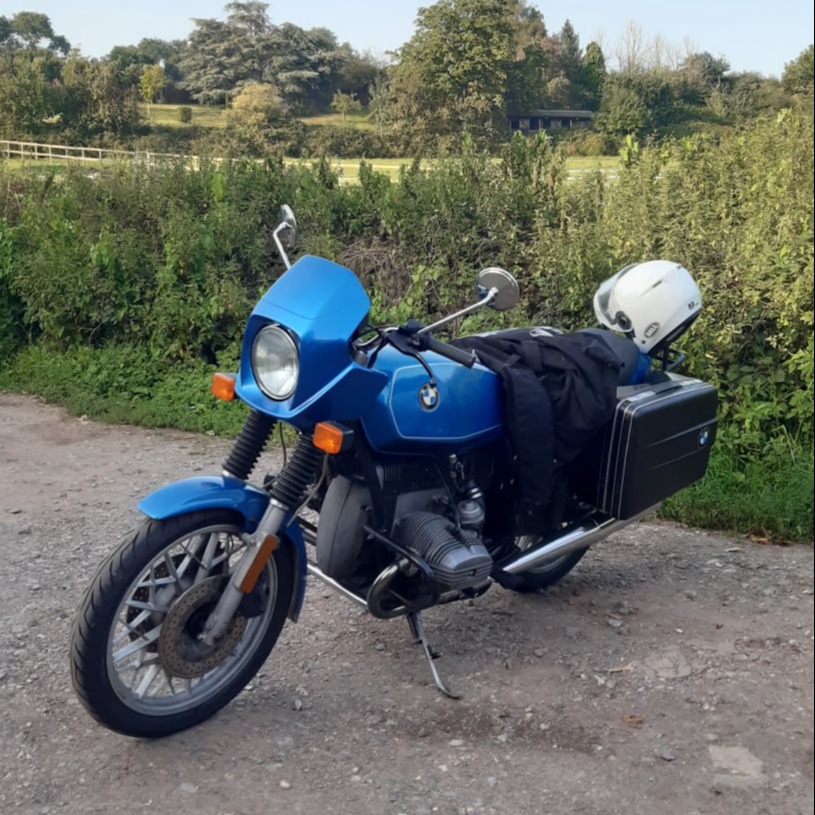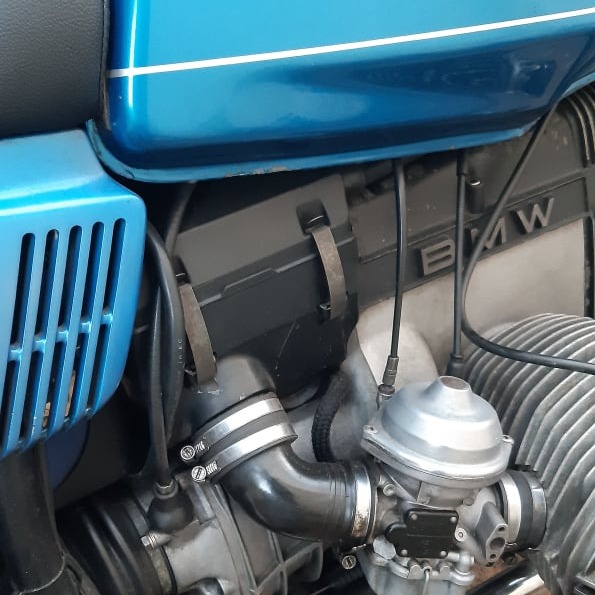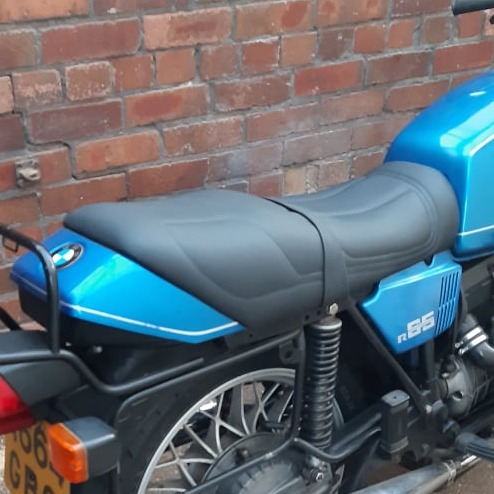
The BMW R65 and R45 Motorcycles
Known as the "little BMWs" and unloved by some, here follows some comments on the BMW R65 and R45 bikes, about how they came to be and whether they deserve the bad press they get.

Known as the "little BMWs" and unloved by some, here follows some comments on the BMW R65 and R45 bikes, about how they came to be and whether they deserve the bad press they get.
From 1970 to 1995 BMW produced their iconic type 247 engine and fitted it to a range of bikes. Over the years capacities increased, drum brakes gave way to discs, electronic ignition arrived, and mono shock suspension was introduced, but at its heart, all the bikes retained the same air cooled flat twin engine.
However in 1978, Germany passed a law to allow young riders to ride bikes of limited power, specifically 27hp. At the time BMW didn't have a bike in this category so it set about engineering a new small bike.
The bike was produced in a 450cc capacity for the 27hp limit and in a 650cc form as well, and was designated as the type 248.

The new small bikes were clearly BMW, they had the same flat twin configuration, same transmission and a shaft drive. The engine also shared the casing from the larger bikes, but internally it was different. The crank had a shorter stroke, 61.5mm instead of the larger bike's 70.6mm. This made the engine slightly narrower, by about 50mm. The swinging arm was shorter, the front wheel smaller and the seat a little lower. The result was a bike that was clearly BMW, but slightly "down-sized" and less intimidating than the bigger bikes.
In 1981 some further changes were made to keep the small bikes in line with the other models in the range, these included a lighter flywheel, electronic ignition, Nikasil cylinder bores, 2mm larger valves and a new seat design with more storage.
What went wrong?
Although BMW had produced a neat, attractive design with the R45/65, the bike didn't sell in great numbers. The R45 sold reasonably well in the bracket it was designed for, but there were other bikes in the same category that were cheaper and faster. Common opinion seemed to be that the R45 was heavy for its power output and performance suffered as a result.
The R65 overcame this performance deficit and was a good mid-sized bike, but again the price point was not much less that the larger bikes. An R65 cost £2300 at launch and an R80 from the same production date would have cost in the region of £2500. In 1985 BMW stopped production of the small bikes, in favour of their flagship type 247 models.
BMW recognised that the R65 engine was liked by riders and it lived on for a couple more years in the larger frame of the bigger bikes, but these later R65s lost the small nimble road holding of the original.
The R65 today.
The R65 still struggles with acceptance among BMW riders where it gets labeled as "not a proper BMW" by some. However - anyone that has owned and ridden one will usually have only good things to say about them. In the BMW community and groups, it is the bike most people say they wish they hadn't sold.
BMWs decision to stop production in 1985 was understandable with a need to reduce model variants and production costs and of course this favoured their established brand and customer base; but it is arguable that they actually killed off the best mid-sized bike they had produced to date.
Another plus point about the R65 was that it came about when BMW were still producing simple, reliable air-cooled bikes, but with enough new technology to make them truly useful and appealing. If the twin shock bikes are considered to run from 1970 to 1985, then the R65 came at the latter end of this scale, giving them the classic twin-shock looks, but with electronic ignition, twin hydraulic disc brakes (Brembo in many cases), alloy wheels, kinematic gear changers and modern instruments.
Finally - where the R65 really stood out was in its handling. The shorter wheelbase, smaller front wheel and narrower engine made it the sharpest handling bike in the range. Combined with the lighter flywheel which made the engine more responsive, it was a bike that was eager to make progress on any road. There were faster bikes, there were bigger bikes; but the R65 managed to combine speed and agility with comfort and luggage capacity, to make a very likable, general purpose motorcycle.
Post and Pre 1980 R65s.
In 1980 BMW made some performance improvements to the R65, namely a lighter flywheel, hardened cylinder bores, larger valves and electronic ignition.
It is possible to identify the later bikes because they have a plastic airbox in place of the earlier metal one. Although the metal one looks more integrated and less of an afterthought, the new filter was one of the things that help lift the engine's power to 50hp. The seat is another clue to an R65's vintage, although they can be swapped over, as long as the rear cowling is swapped as well.

Pre 1980 heavy flywheel airbox.

Post 1980 improved airbox.

Pre 1980 seat and rear cowl.

Later seat and rear cowl.

Following a post on the airhead Facebook group about upgrading from my vintage R60/6 to a more up-to-date R65, I was contacted by a member who had such a bike for sale. It was a 1984 model, so expected to have the lighter flywheel, larger valves and improved airbox design for optimum performance. It was finished in Azur blue and had the optional BMW small fairing.
Having been owned for the last 17 years by the seller, maintenance had been upheld to a regular schedule and the bike came with significant history, including most MOT's since new. Following a dialogue about the finer points I decided that I would buy the bike, provided it was as good as described and it was not too big/tall for my featherweight build.
The bike was located in Peterborough and so a 1-way train ticket was purchased in anticipation of a sale.
The bike turned out to be just what was promised and a short test drive showed it was manageable and a lively performer. The twin Brembo discs were perhaps the most significant upgrade from the R60/6, plus the crisper throttle response and quicker handling. The only downsides were a ripped seat and slightly tired exhaust system, wobbly side-stand and some abrasion of the tank caused by movement of the seat. On the plus side, the bike came with BMW hard panniers, crash bars, tool kit, a few spares and an improved battery earth connection to address a known issue on these bikes.
The 155 mile ride home was unremarkable, but as the miles clocked up it was clear the BMW was very stable and comfortable. Vibration at highway speeds was practically zero and the riding position struck the right compromise between leaning forward and wind pressure at speed. The front brake was very positive and powerful, and road holding gave no surprises.
Overall, the R65 is a great mid-sized bike. Compared to the R60/6 the bike looks much more appealing (to my eye) with a more chiseled tank shape, less bulbous rocker covers and smart alloy wheels. The lower seat height suits my short stature and the low bar ergonomics are a good fit. Finally, the later model upgrades including electronic ignition, modern clocks, kinematic gear change and hydraulic brakes make it a great classic bike for daily use, commuting and touring.
Drag & Drop Website Builder